Composite Fiberglass Filter Paper: What’s Actually Changing on the Factory Floor
If you’re speccing an air, oil-mist, or liquid coalescing line right now, you’ve probably bumped into composite fiberglass filter paper. To be honest, it has moved from niche to default in many projects—mostly because engineers are chasing higher capture at lower ΔP without paying a penalty in service life.
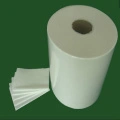
Industry trend check
Three things I keep hearing: tighter micron control (um1–um30), migration to multi-layer microglass + PET scrims, and cert-ready documentation for ISO 16890/ASHRAE 52.2. Surprisingly, even oil-gas separators are borrowing HEPA-style test language to compare apples to apples.
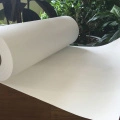
What it is (and why it works)
Composite fiberglass filter paper blends micro-glass fiber layers with PET nonwoven reinforcement and a resin system—usually acrylic or epoxy—calendered for pore-size control. The result: high efficiency on submicron aerosols, decent dust holding, and mechanical stability in cartridges and pleats.
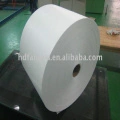
Typical specs (project-level)
| Grade | Nominal Cut | Basis Weight | Initial ΔP | Efficiency | Max Temp |
|---|---|---|---|---|---|
| UM1 | ≈1 µm | 85–110 g/m² | 80–110 Pa @ 5.3 cm/s | ≥99.95% @ 0.3 µm | 120–150°C |
| UM5 | ≈5 µm | 120–160 g/m² | 60–90 Pa | 95–99% @ MPPS | 120–150°C |
| UM30 | ≈30 µm | 160–220 g/m² | 40–70 Pa | 70–90% (coarse) | 120–150°C |
Real-world use may vary by pleat height, resin %, and face velocity. Many customers say UM5 hits a sweet spot for oil-mist coalescers.
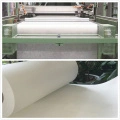
Process flow and QA
Composite fiberglass filter paper production (Handan, Hebei, China, Second Building and Studying No21 Shiji Street):
- Raw materials: micro-glass fibers, PET nonwoven scrim, acrylic/epoxy binder.
- Wet-laid forming → multilayer lamination → resin impregnation → calendering → curing → slitting.
- Testing: ISO 16890 or ASHRAE 52.2 (air), ISO 29463 for HEPA tiers, ISO 12500 for oil aerosol, ASTM D2986 for particle penetration/ΔP.
- Service life: HVAC 6–18 months; oil-mist coalescers 2–6 months; liquid polishing 1–3 months (depending on load).
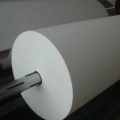
Applications and advantages
Use it in oil-gas separation, liquid polishing, cleanroom pre-HEPA stages, compressor intake filters, lab fume capture. Advantages: high capture of submicron aerosols, stable pleatability, lower initial ΔP, and predictable loading curve. Actually, it also holds up nicely at elevated temps up to ~150°C.
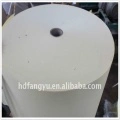
Vendor snapshot (quick comparison)
| Vendor | Media Type | Certs | Lead Time | Notes |
|---|---|---|---|---|
| FiltersMaterial (Hebei) | Micro-glass/PET composite | ISO 9001; RoHS/REACH | 2–4 weeks | Custom um1–um30, roll or cut. |
| Global OEM A | Glass + synthetic blends | ISO 16890 reports | 4–6 weeks | Strong HEPA/ULPA lineup. |
| EU Supplier B | Coalescing media | CE, ISO 12500 data | 3–5 weeks | Premium pricing, low MOQ. |

Customization, testing, and a quick data point
You can dial fiber diameter, binder %, and PET scrim weight to balance stiffness vs. permeability. For one customer, a UM5 variant with 6% acrylic binder cut initial ΔP by ~12% while maintaining 99.5% @ 0.3 µm (ISO 29463 MPPS); dust-holding improved ~9% on an ASHRAE 52.2 loading curve. It seems that minor calendering tweaks matter more than most expect.
- Certs: ISO 9001; material RoHS/REACH compliant.
- Formats: 500–1000 mm roll widths, cut sheets, pleatable packs.
- Traceability: lot-based test reports attached to each shipment.
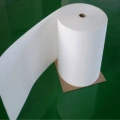
Mini case notes
– Electronics plant (SEA): swapped in composite fiberglass filter paper pre-HEPA; ΔP dropped ~18 Pa, HEPA life extended ~5 months.
– CNC shop (EU): oil-mist coalescing stage using composite fiberglass filter paper UM5; 30% fewer changeouts over 10 months.
– Food packaging (NA): liquid polishing with composite fiberglass filter paper UM10; clearer effluent, ISO 4406 improved from 18/16/13 to 16/14/11.
Where to start
If you’re unsure, spec UM5 or UM10, face velocity 5.3–8.5 cm/s, and request ISO 16890 or ISO 12500 test sheets. And, yes, ask for calendering parameters—small changes, big results.
Authoritative references
- ISO 16890: Air filters for general ventilation.
- ASHRAE 52.2: Method of Testing General Ventilation Air-Cleaning Devices.
- ISO 29463: High-efficiency filters and filter media for removing particles from air.
- ISO 12500: Filters for compressed air—Test methods for oil aerosols and vapors.
- ASTM D2986: Standard Test Method for Airflow and Particle Penetration of Filter Media.
Hebei Fangyu Filter Material Technology Co.,Ltd is the leading innovative developer and manufacturer all kinds of filter materials in China.pocket filter media factory Located in the economically developed Handan Hebei specialized in various kinds of filter materials from Synthetic Media,Paint stop Filter Media Pre- filter Non Woven Fabric ,Wire Mesh Backed Laminated Filter Media,Ceiling filter Auto Cabin Filter Media, polypropylene filter media, Glass Microfiber Filter Media Nonwoven Fabric,Pre- filter non woven fabric, activated carbon filter materials, EN779 bag filter materials, HEPA filter media, air filter HEPA filter media and Filter Accessories.Our filter materials have passed ISO9001:2000 quality certification since 2005.Certified by ISO9001, UL2 and SGS, with emphasis on quality and service. Our strength is the ability to find innovative ways to meet marketplace or product requirements.activated filter media price|super blog